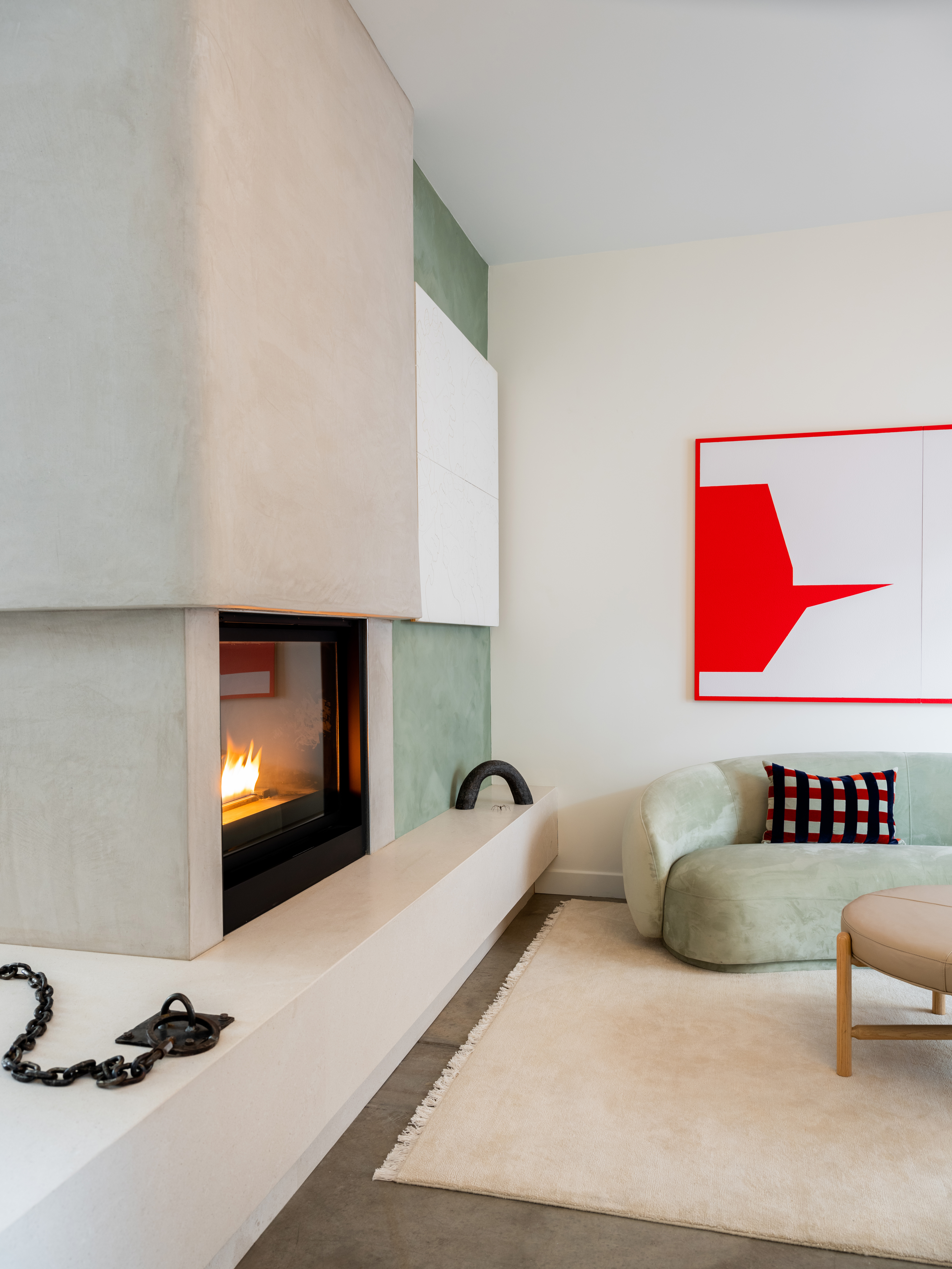New York or Los Angeles? The two cities have long been competing anchors of the American arts scene, but for Los Angeles–based art collectors Cecily Chambers and Tristan Robinson, the choice was obvious. As inspiration for the design of their 2,500-square-foot Venice townhome, they drew on Hunter Drohojowska-Philp’s book Rebels in Paradise: The Los Angeles Art Scene and the 1960s. And they called on an emerging local design firm, Electric Bowery, alongside Katie Hickman, to make their vision a reality.
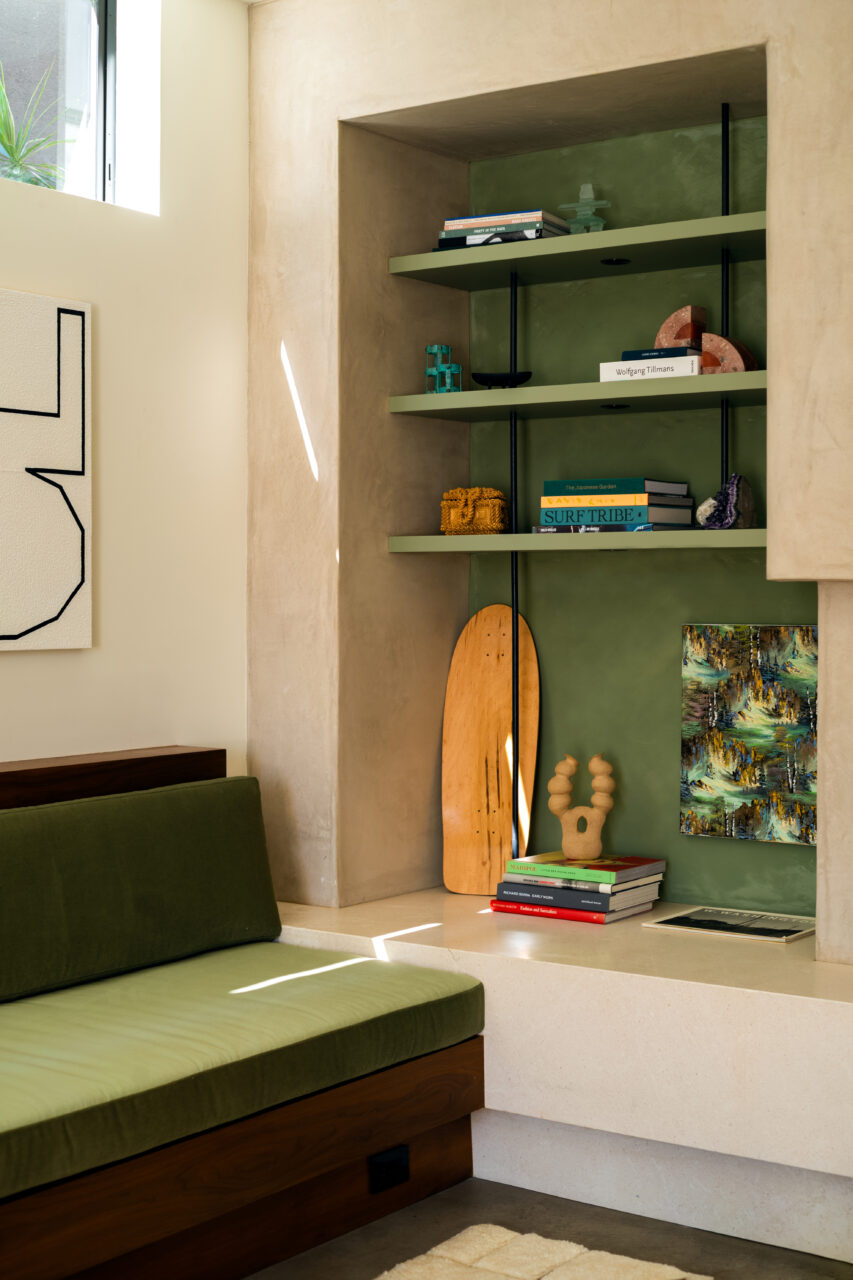
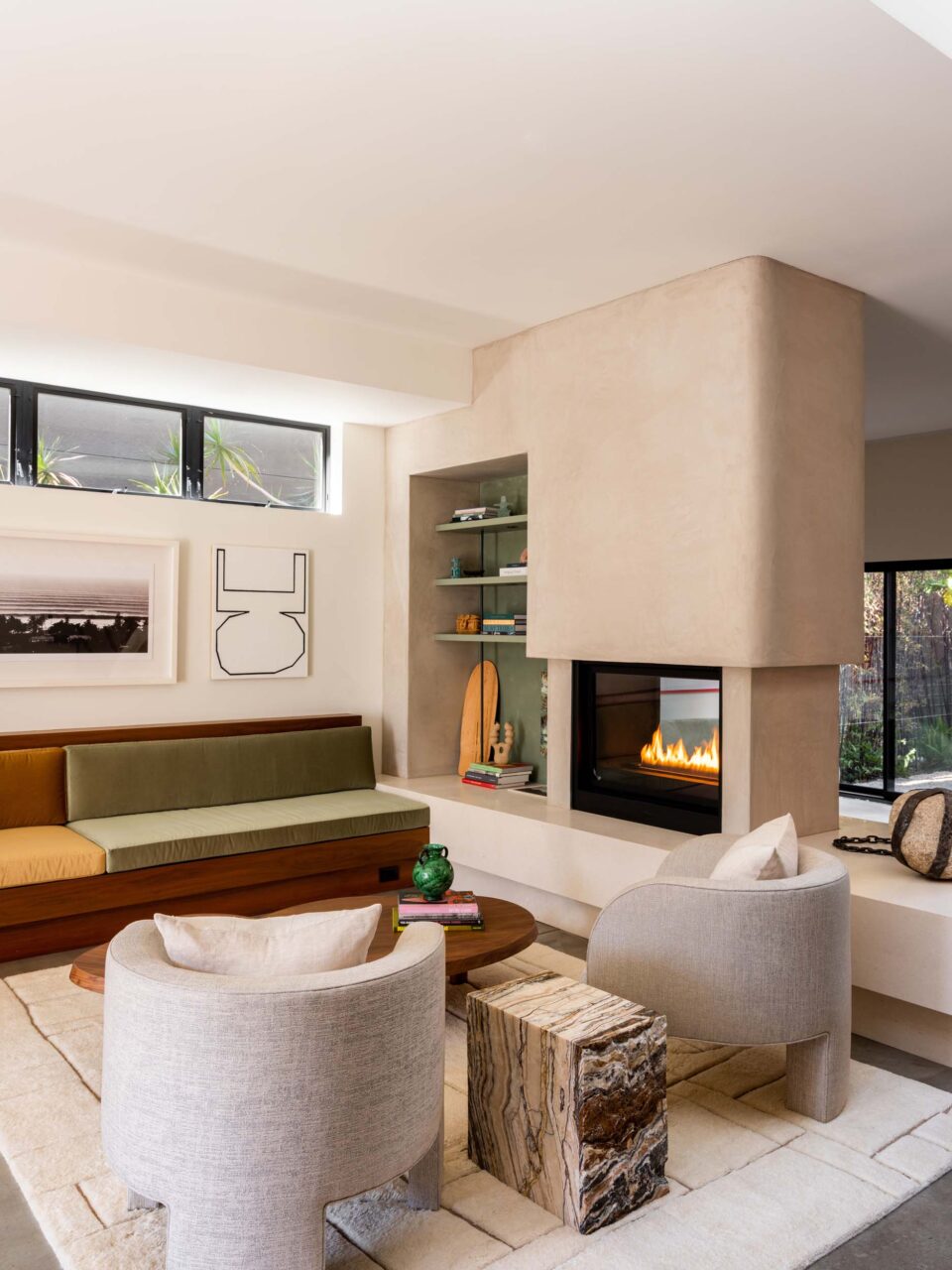
“We were looking at how the art and the architecture integrate,” the firm’s cofounder and principal Lucia Bartholomew told AN Interior. “The building is formed to house this art in a custom way.” Rather than simply seeking to showcase art on empty gallery walls, the firm transformed the boxy condo into a modernist piece itself, playing into tonal relationships like pop art’s forebears.
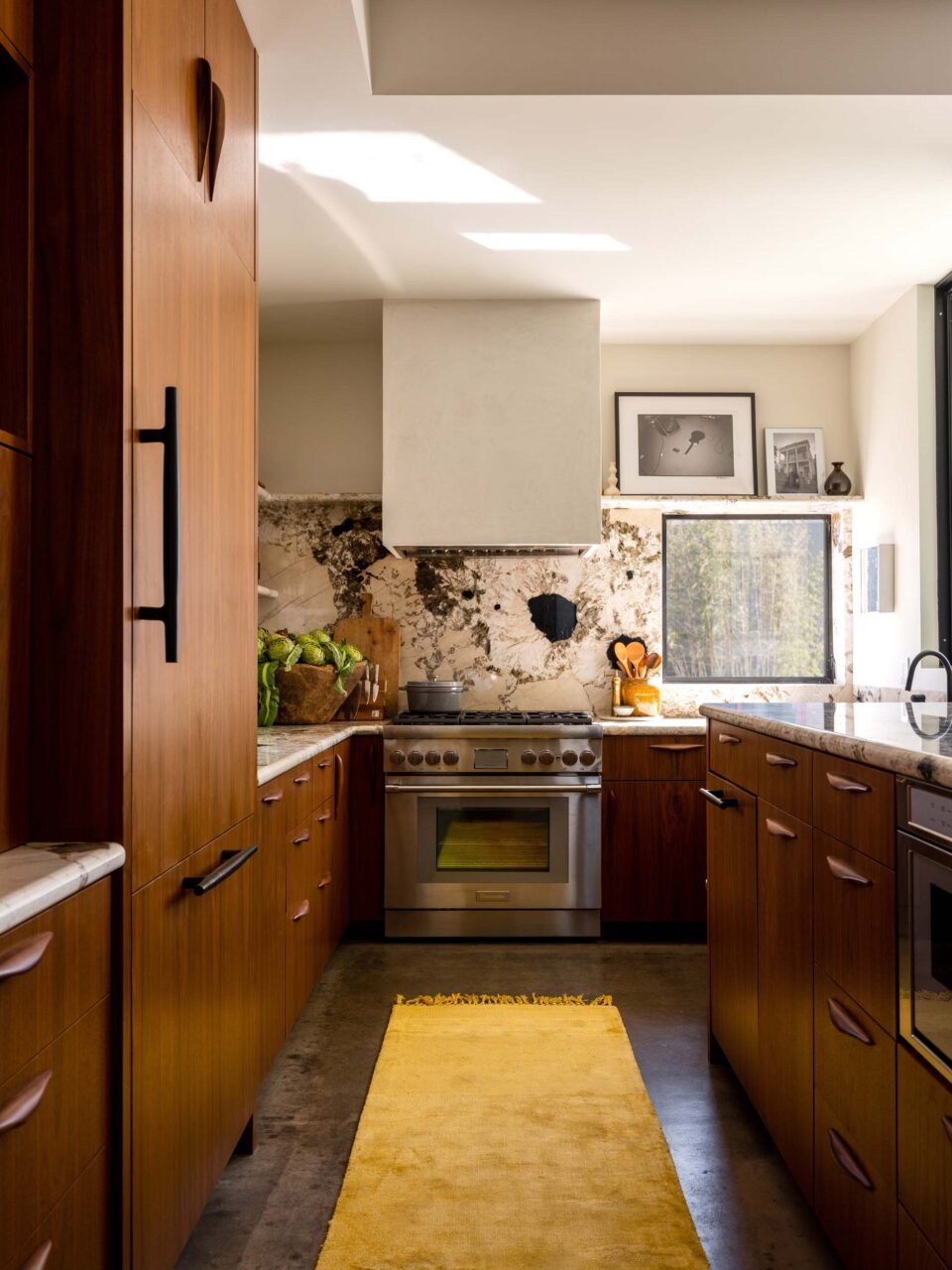
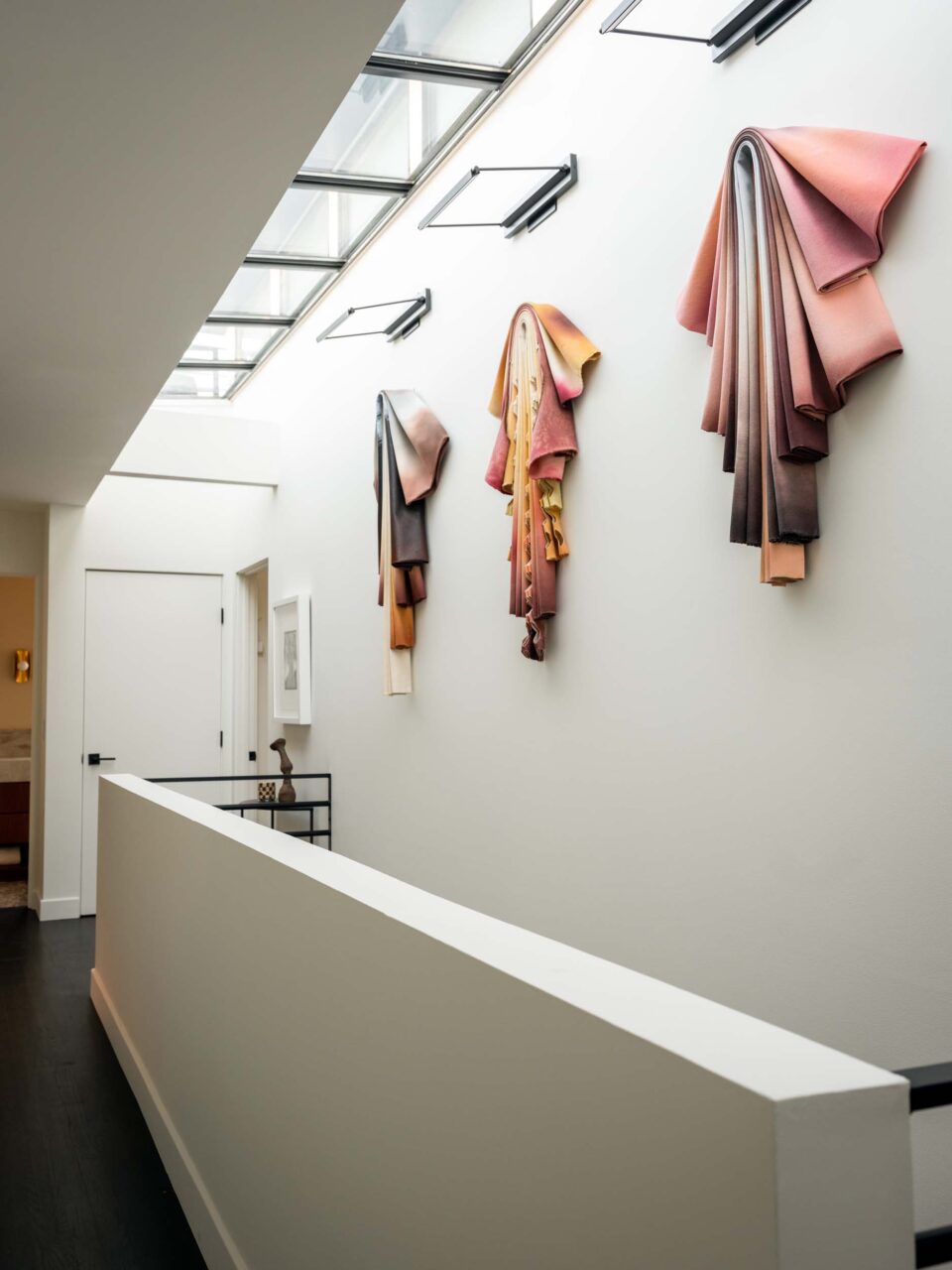
The collection informs the very structure of the building, starting with the first floor. Bartholomew and her team opened up the space by removing walls (which proved a challenge, as it then required the addition of industrial posts) so that spatial delineation was left to an original plaster-wrapped and limestone fireplace. This centerpiece is double-sided, creating contrasting vignettes: On one side clean lines converge into a sculptural, recessed shelving solution, while the other houses artist Fay Ray’s sculptural ball-and-chain work, Guardian, bolted into its seat.
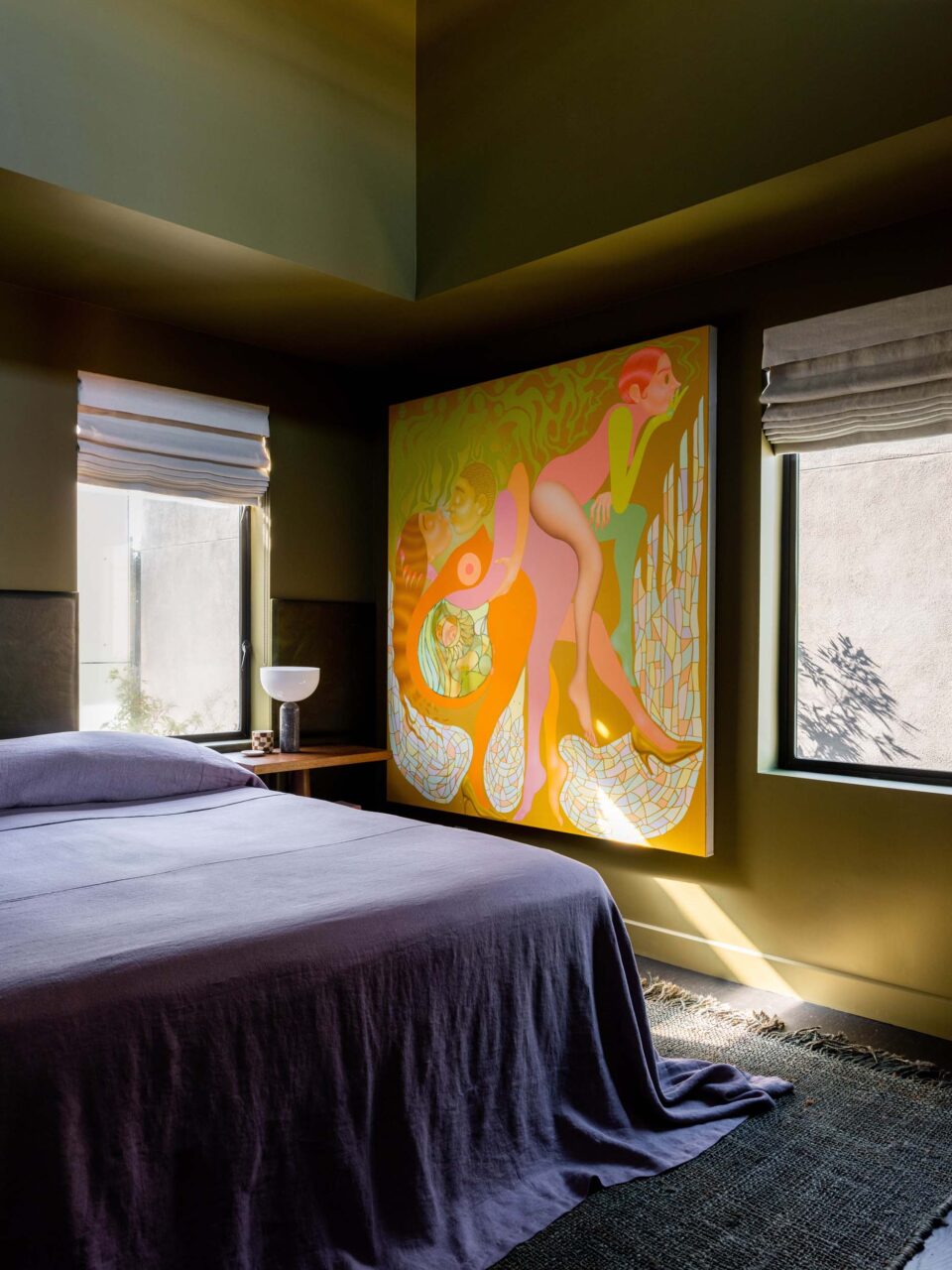
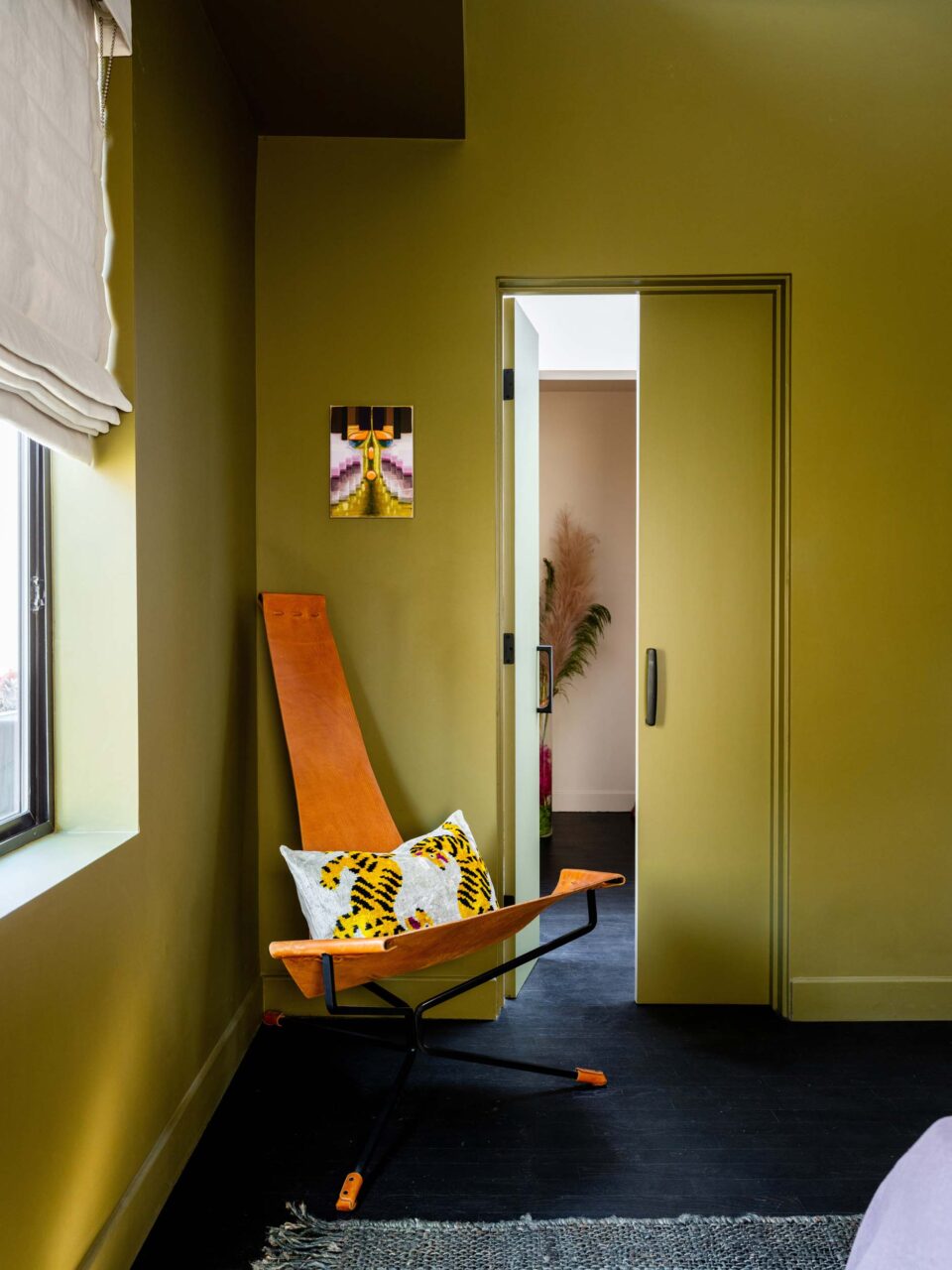
While designs like the home’s bold banquette take after the forms of the client’s abstract expressionist pieces, color and materiality are informed by the couple’s plethora of works by Los Angeles artists. Green Brazilian quartzite acts as a bold backsplash for black-and-white photography in the kitchen, while slightly weathered leather and chartreuse-covered bedroom walls bring a Wendell Gladstone painting to life.
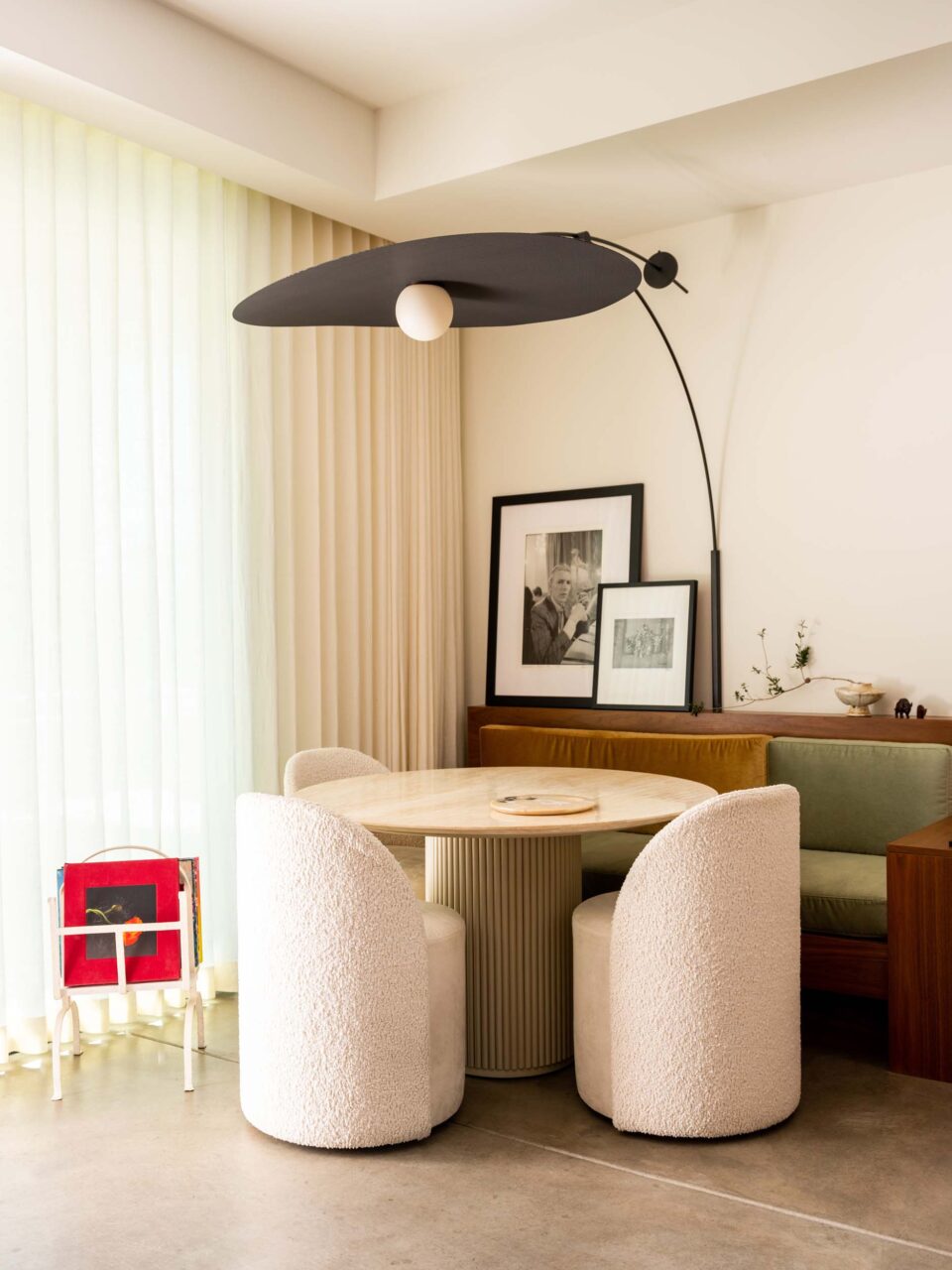
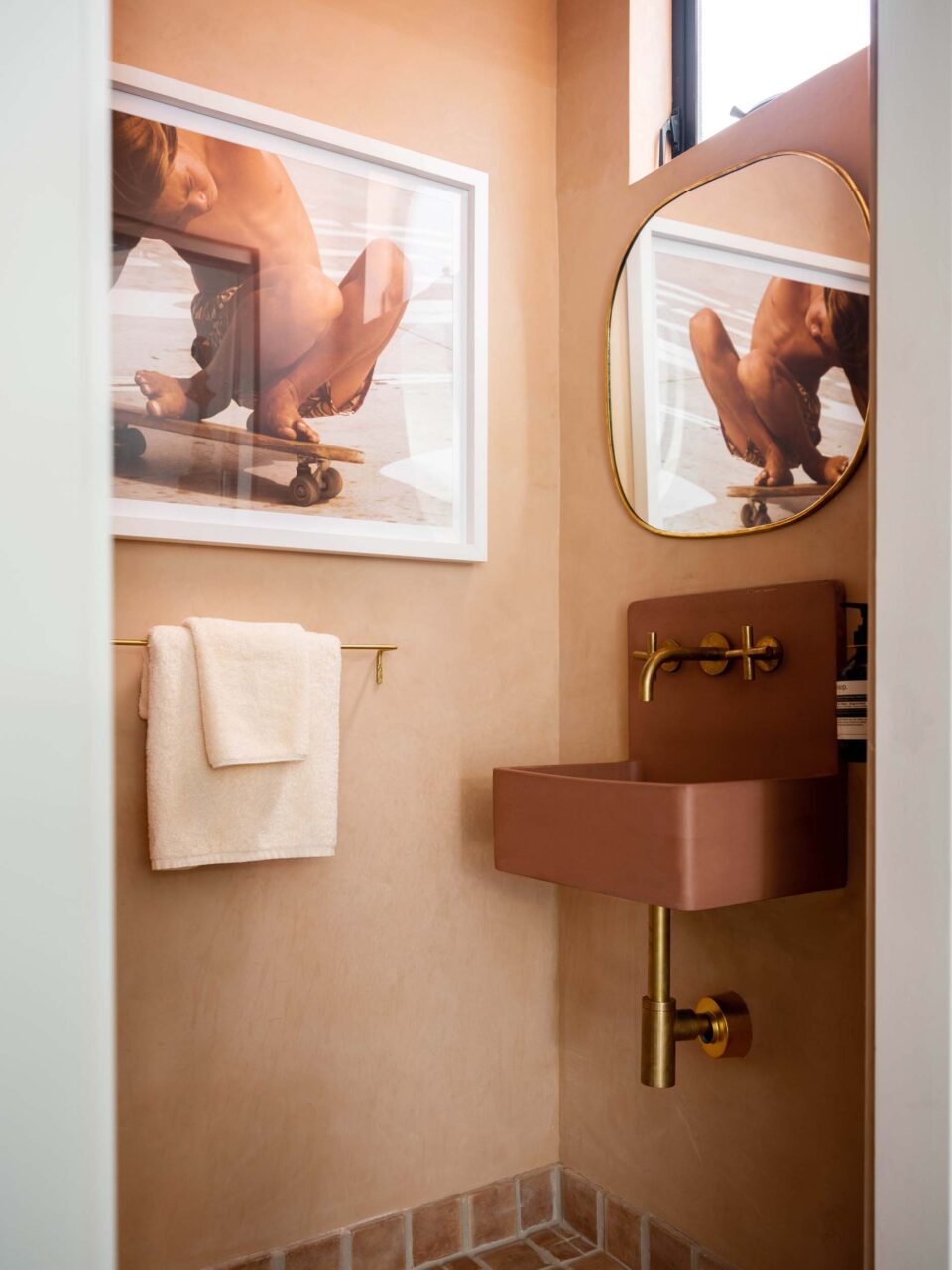
The bathroom is all Hugh Holland in its palette and nostalgia. The L.A. skate photographer’s Down on the Corner is at home among warm terra-cotta floors, plaster walls, and gold trim.
The surprisingly colorful townhome doesn’t look like the rest of Electric Bowery’s oeuvre, and that’s precisely the point. The one unifying ethos? “Being good listeners and letting the client’s personality drive the aesthetic approach,” answered Bartholomew. “We’re not the type of designer where every project looks like an ‘Electric Bowery’ project, because we let each one evolve and click on its own identity.”
